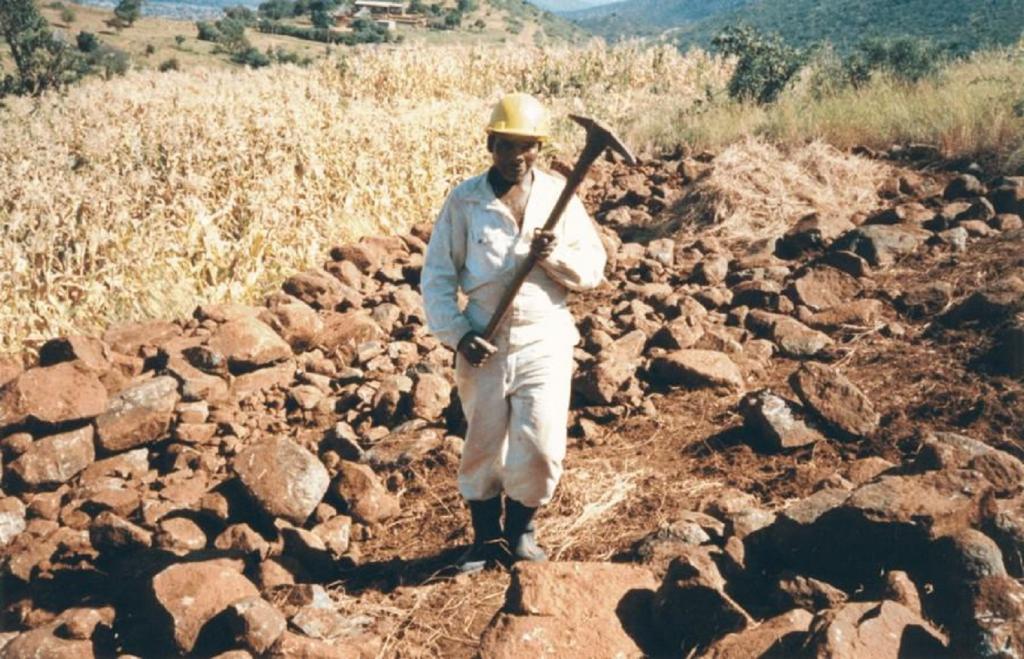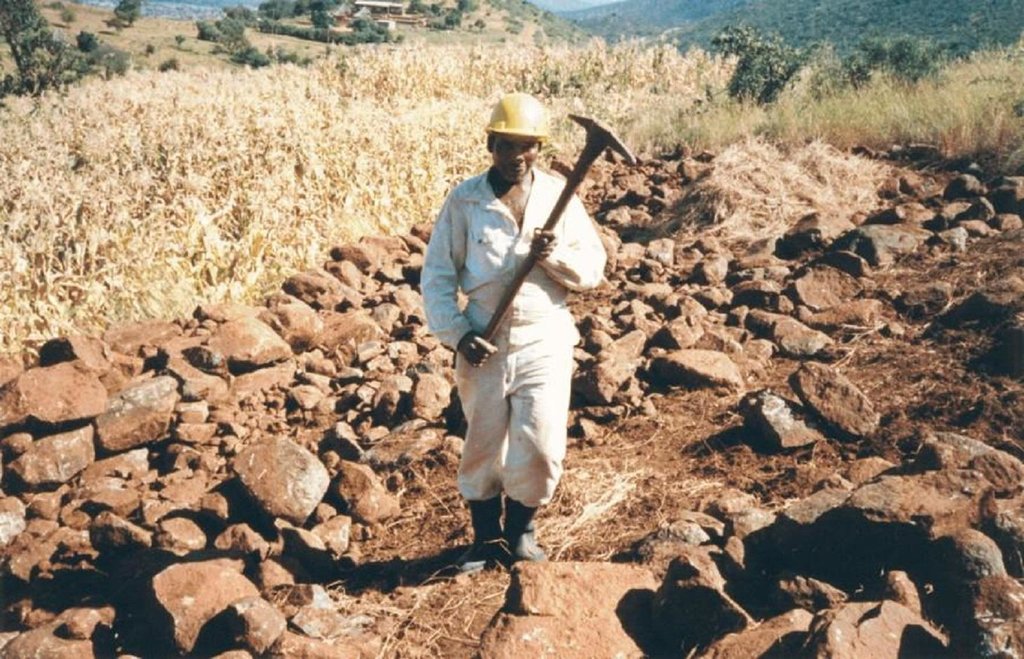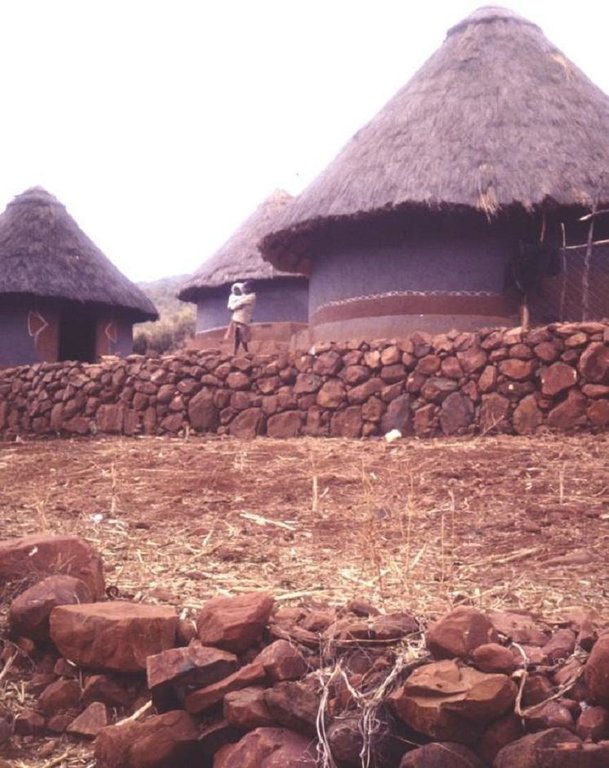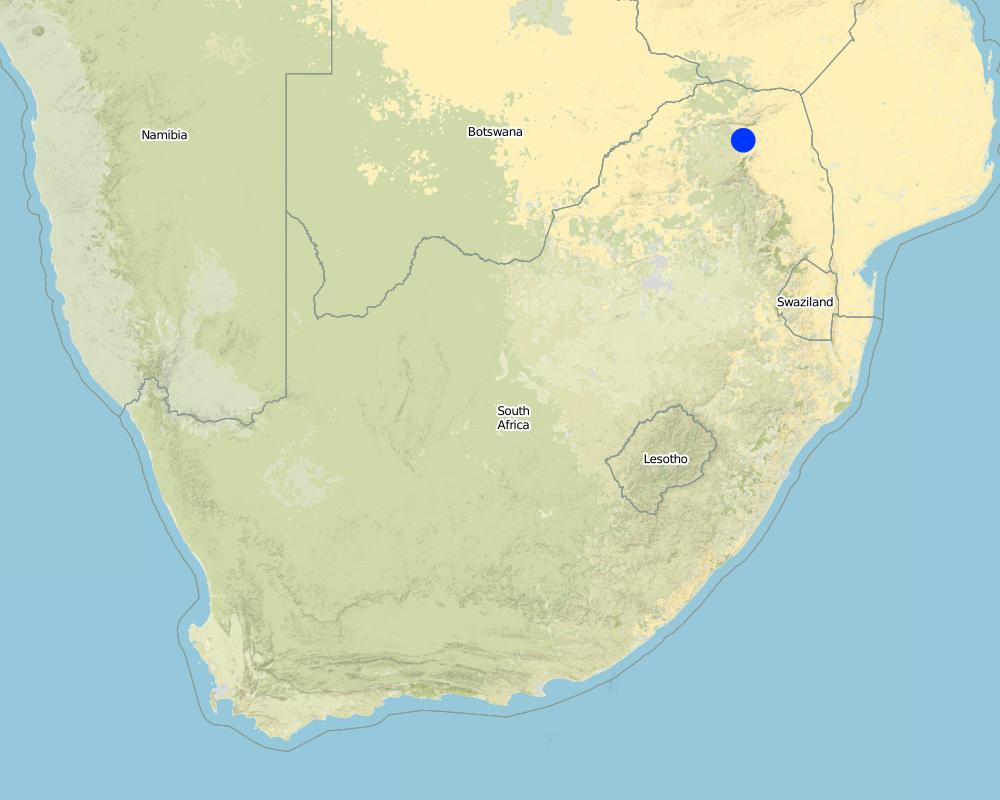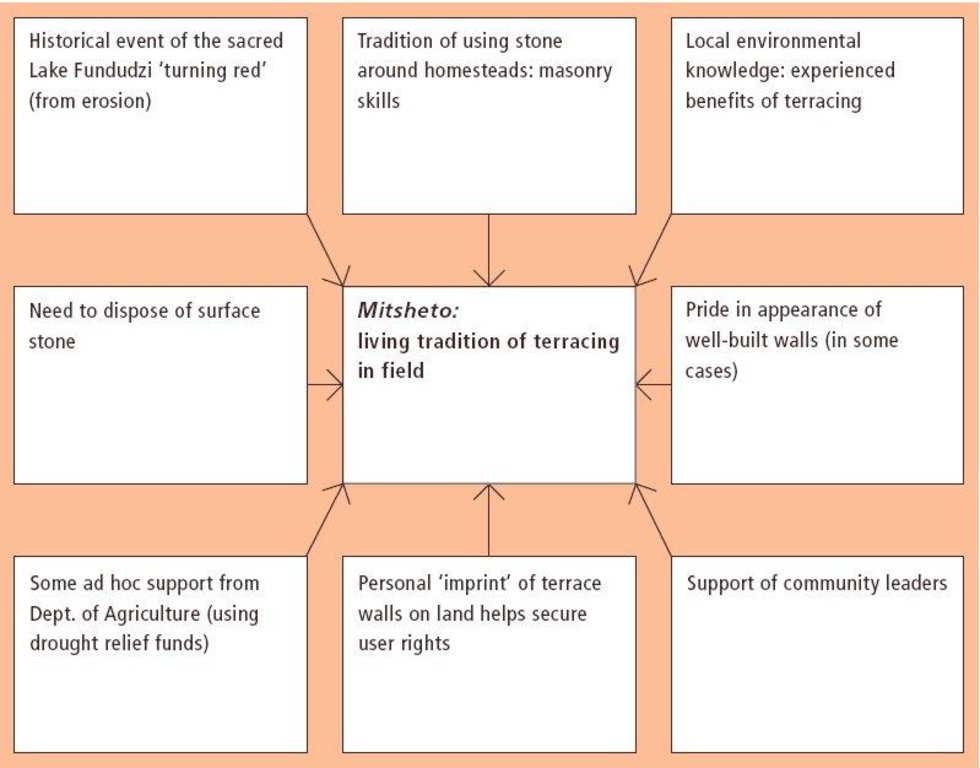Community tradition [South Africa]
- Creation:
- Update:
- Compiler: William Critchley
- Editor: –
- Reviewers: Fabian Ottiger, Deborah Niggli
approaches_2625 - South Africa
View sections
Expand all Collapse all1. General information
1.2 Contact details of resource persons and institutions involved in the assessment and documentation of the Approach
SLM specialist:
Van der Merwe Rinda
rinda@arc.agric.za
Institute for Soil, Climate and Water
P/Bag x79, 0001 Pretoria, South Africa
South Africa
Name of project which facilitated the documentation/ evaluation of the Approach (if relevant)
Book project: where the land is greener - Case Studies and Analysis of Soil and Water Conservation Initiatives Worldwide (where the land is greener)Name of the institution(s) which facilitated the documentation/ evaluation of the Approach (if relevant)
Institute for Soil, Climate & Water - South Africa1.3 Conditions regarding the use of data documented through WOCAT
The compiler and key resource person(s) accept the conditions regarding the use of data documented through WOCAT:
Yes
1.4 Reference(s) to Questionnaire(s) on SLM Technologies
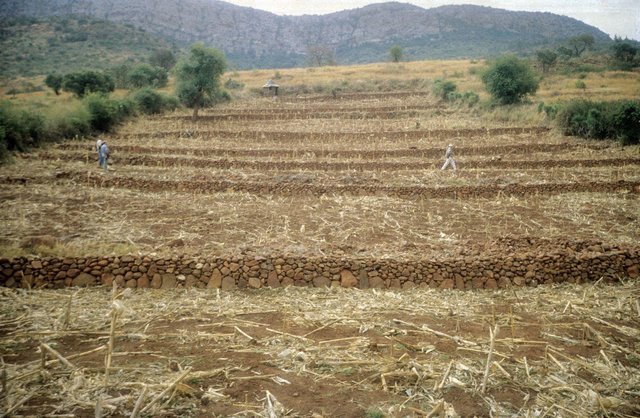
Traditional stone wall terraces [South Africa]
Stone walls built on sloping fields to create terraces for cultivation and conservation: both ancient and contemporary.
- Compiler: William Critchley
2. Description of the SLM Approach
2.1 Short description of the Approach
Inherited, and still practiced, tradition of stone terracing - passed down from generation to generation.
2.2 Detailed description of the Approach
Detailed description of the Approach:
Aims / objectives: The VhaVenda people of Limpopo Province in South Africa have a tradition of building with stone which has been passed down from generation to generation. They construct stone walls around their houses for example, taking a pride in the appearance of their homesteads. There is a historical monument nearby, the stone-built kraal at Dzata, the ruins of which are situated within a few kilometres of the study location. There may even be some evidence that the VhaVenda came originally from the area of the Great Zimbabwe (the famous stone-built fortress in Zimbabwe). It is not surprising therefore that the VhaVenda have used their masonry skills to build terraces in fields to counter erosion and simultaneously to make cultivation - along the contour by oxen - possible. This tradition has been passed down through the ages: it is institutionalised in the community and is practised together by men, women and children on a family basis. It is encouraged by community leaders: a particular example of this was in the 1960s when local chiefs were concerned at the sacred Lake Fundudzi 'turning red' - with sediment eroded from the land - and as a result they launched a conservation campaign to prevent soil wash into the lake. There has been modest and occasional support by the Department of Agriculture, in the form of ad hoc drought relief funds. There is quite a range of technical ability/care taken in terracing. Some walls are meticulously built; others are merely piles of stone across the slope. One of the reasons for this is that work tends to be done on an individual basis. Another result is that fields may take two years or more to be fully terraced. What is evident is that the land users - as well as being experienced masons -appreciate the benefits of the terraces they construct. An investigation of local environmental knowledge and conservation practices has demonstrated this clearly (see reference).
Methods: The causes of erosion were explained by the interviewees as being part natural (rainfall, slope etc) and part anthropogenic (poor road building, up and down ploughing, burning of grassland etc). The main negative impact of erosion was considered to be loss of soil fertility: hence terracing for protection. This indigenous knowledge also extends to soils: eight local soil types and their differences in terms of texture, fertility and erodibility are recognised in the study area.
2.3 Photos of the Approach
2.5 Country/ region/ locations where the Approach has been applied
Country:
South Africa
Region/ State/ Province:
Limpopo Province
Map
×2.7 Type of Approach
- traditional/ indigenous
2.8 Main aims/ objectives of the Approach
The objective of the local people is simply to continue making cultivation possible and sustainable, through the local tradition of using stone walls to create terraces and to remove abundant stones from the field.
The SLM Approach addressed the following problems: - the tradition presumably arose as a spontaneous local response to degradation: it remains well entrenched - underlying problems of no flat land to cultivate, soil erosion/fertility decline on sloping fields, and loose stone and rocks impeding animal-draw ploughs
2.9 Conditions enabling or hindering implementation of the Technology/ Technologies applied under the Approach
other
- hindering
labour: High labour demand to remove stone from inhibiting cultivation.
Treatment through the SLM Approach: Traditional teaching that such stone can be used constructively to improve conservation and yield benefits.
3. Participation and roles of stakeholders involved
3.1 Stakeholders involved in the Approach and their roles
- local land users/ local communities
3.2 Involvement of local land users/ local communities in the different phases of the Approach
| Involvement of local land users/ local communities | Specify who was involved and describe activities | |
|---|---|---|
| initiation/ motivation | self-mobilization | passing on knowledge; passing on of knowledge from generation to generation |
| planning | self-mobilization | |
| implementation | self-mobilization | family-based (or individual) construction |
| monitoring/ evaluation | none | |
| Research | none |
3.3 Flow chart (if available)
3.4 Decision-making on the selection of SLM Technology/ Technologies
Specify who decided on the selection of the Technology/ Technologies to be implemented:
- land users alone (self-initiative)
Explain:
Decisions on the method of implementing the SLM Technology were made by by land users* alone (self-initiative / bottom-up)
4. Technical support, capacity building, and knowledge management
4.1 Capacity building/ training
Was training provided to land users/ other stakeholders?
Yes
Subjects covered:
There was/is no formal training - just father to son/mother to daughter.
4.2 Advisory service
Do land users have access to an advisory service?
Yes
Specify whether advisory service is provided:
- on land users' fields
Describe/ comments:
Key elements: Some encouragement from Department of Agriculture especially during soil and water conservation campaigns/drought relief periods.
4.3 Institution strengthening (organizational development)
Have institutions been established or strengthened through the Approach?
- yes, a little
Specify the level(s) at which institutions have been strengthened or established:
- local
Give further details:
support for SWC campaigns from local leaders
4.4 Monitoring and evaluation
Is monitoring and evaluation part of the Approach?
Yes
Comments:
bio-physical aspects were ad hoc monitored through observations
technical aspects were ad hoc monitored through observations; indicators
economic / production aspects were ad hoc monitored through observations
area treated aspects were ad hoc monitored through observations
There were no changes in the Approach as a result of monitoring and evaluation
5. Financing and external material support
5.1 Annual budget for the SLM component of the Approach
Comments (e.g. main sources of funding/ major donors):
Approach costs were met by the following donors: government (national): 5.0%; local community / land user(s) (-): 95.0%
5.2 Financial/ material support provided to land users
Did land users receive financial/ material support for implementing the Technology/ Technologies?
No
5.3 Subsidies for specific inputs (including labour)
If labour by land users was a substantial input, was it:
- voluntary
Comments:
Almost entirely voluntary: some small support (approx 5% of the sample monitored) through Government during times of food scarcity with paid relief work.
A (very) small amount of drought relief in recent years from Government
5.4 Credit
Was credit provided under the Approach for SLM activities?
No
6. Impact analysis and concluding statements
6.1 Impacts of the Approach
Did the Approach help land users to implement and maintain SLM Technologies?
- No
- Yes, little
- Yes, moderately
- Yes, greatly
Great: as part and parcel of the local tradition - for example contour ploughing is facilitated by the fact that the stone lines are on the contour, making this type of ploughing easier.
Did other land users / projects adopt the Approach?
- No
- Yes, little
- Yes, moderately
- Yes, greatly
Only within this small pocket of Thohoyandou District (as far as known).
6.3 Sustainability of Approach activities
Can the land users sustain what has been implemented through the Approach (without external support)?
- yes
If yes, describe how:
The VhaVenda have built terraces for generations so far, so no reason to think that things will change.
6.4 Strengths/ advantages of the Approach
| Strengths/ advantages/ opportunities in the compiler’s or other key resource person’s view |
|---|
| Traditional approaches have the potential to endure (How to sustain/ enhance this strength: Acknowledgement and encouragement by the Government and/or NGOs will help this.) |
6.5 Weaknesses/ disadvantages of the Approach and ways of overcoming them
| Weaknesses/ disadvantages/ risks in the compiler’s or other key resource person’s view | How can they be overcome? |
|---|---|
| This tradition was largely unrecognised until recently: therefore an opportunity was lost to encourage people and help the approach spread | Publicise widely and carry out farmer-to-farmer/community-to-community visits to further its spread and the spread of local SWC knowledge more generally. |
7. References and links
7.1 Methods/ sources of information
- field visits, field surveys
- interviews with land users
7.2 References to available publications
Title, author, year, ISBN:
Critchley W and Netshikhovehla E (1998) Conventional views, changing paradigms and a tradition of soil conservation.
Links and modules
Expand all Collapse allLinks

Traditional stone wall terraces [South Africa]
Stone walls built on sloping fields to create terraces for cultivation and conservation: both ancient and contemporary.
- Compiler: William Critchley
Modules
No modules


